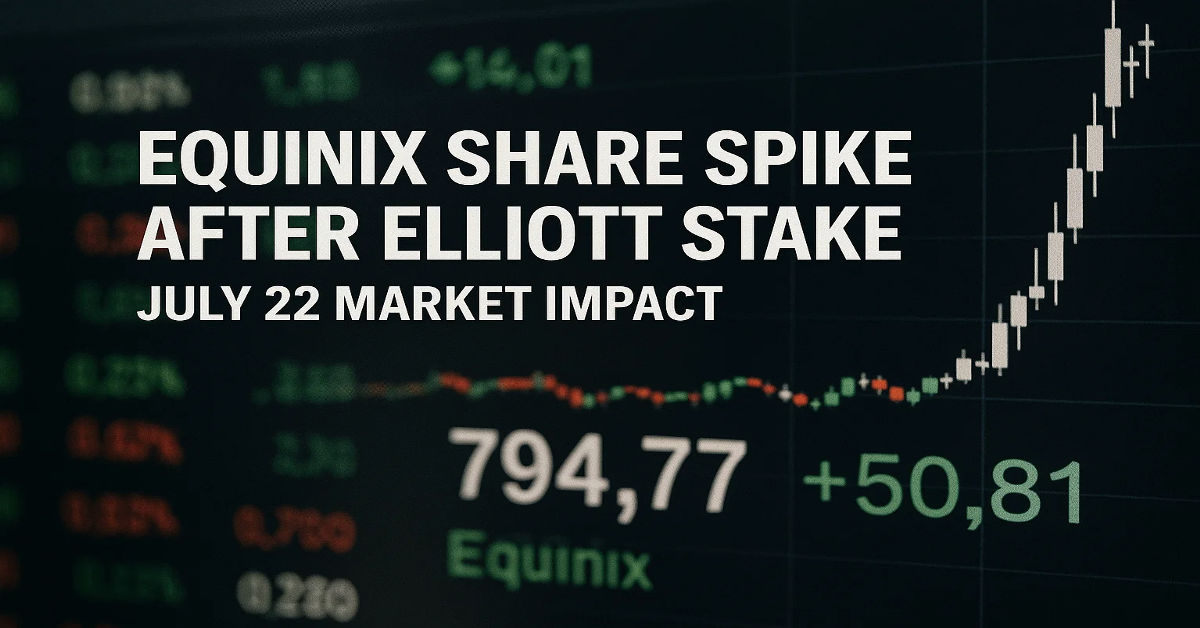
Bank of America (BoA), one of the largest financial institutions in the United States, has once again demonstrated its resilience and market strength by reporting better-than-expected Q2 2025 earnings. Despite macroeconomic uncertainties, inflation worries, and market volatility, the bank delivered a solid performance—reassuring investors and reinforcing its role as a key player in the U.S. financial ecosystem.
This article takes a deep dive into the details behind BoA’s second-quarter earnings, the factors driving its success, analyst reactions, and what this means for the broader economy and financial sector in 2025.
Highlights of BoA’s Q2 2025 Earnings Report
Bank of America’s Q2 earnings surpassed analysts’ projections on multiple fronts. Here are the major takeaways:
- Net income: $8.9 billion
- Earnings per share (EPS): $0.92 (vs. Wall Street estimate of $0.85)
- Revenue: $26.5 billion (up 8% year-over-year)
- Trading revenue: Jumped 15% due to bond and FX market activity
- Net interest income: Up 7% to $14.2 billion
- Provision for credit losses: $1.4 billion (higher than expected due to conservative risk planning)
These numbers reflect Bank of America’s ability to navigate a complex economic environment, balancing rising interest rates, geopolitical tensions, and consumer behavior shifts.
What’s Driving the Strong Performance?
1. Rising Interest Rates Fuel Net Interest Income
One of the biggest contributors to BoA’s revenue growth was its increase in net interest income (NII). With the Federal Reserve keeping interest rates high to curb inflation, banks are earning more from lending activities. BoA capitalized on this by widening its interest margins, especially across its mortgage and commercial loan divisions.
2. Trading Division Outperforms Expectations
The global markets division reported a 15% jump in trading revenue, primarily driven by bond trading and foreign exchange. The volatility in global markets post-election, combined with tariff inflation and global monetary shifts, created a profitable environment for BoA’s trading desks.
3. Consumer and Wealth Management Stability
Despite signs of consumer tightening, BoA saw solid performance in its consumer banking segment. Digital adoption remains strong, with over 78% of users engaging via mobile or online banking. Its wealth management arm, Merrill Lynch, also contributed positively with asset growth and new client acquisitions.
Challenges Bank of America Still Faces
Even with a strong quarter, Bank of America acknowledged several headwinds:
- Inflation and tariff pressures are pushing up the cost of consumer credit defaults.
- Provision for credit losses increased, reflecting caution in the face of potential economic slowdown.
- Commercial real estate remains a concern, especially in urban office spaces, where delinquencies are beginning to rise.
CEO Brian Moynihan commented,
“We’re cautiously optimistic about the rest of the year. While strong rate tailwinds support our margins, we continue to monitor consumer trends and credit risk closely.”
Analyst Reactions to BoA’s Q2 Performance
Financial analysts responded positively to the earnings report. Several institutions upgraded their price targets for Bank of America stock:
- Goldman Sachs: Raised target price from $35 to $39
- Barclays: Maintained “Overweight” rating
- Morningstar: Noted BoA’s “excellent risk posture and margin strategy”
Analysts agree that while credit risks are rising, BoA is well-capitalized and diversified enough to weather potential downturns.
What This Means for the U.S. Economy
Bank of America’s Q2 report offers insight into consumer spending trends, lending demand, and investor behavior—all of which are key indicators of economic health. The positive earnings suggest:
- Consumers are still borrowing, though more cautiously than before.
- Investors are responding well to market volatility, with high engagement in bonds and commodities.
- Corporations are seeking credit, indicating business expansion even amid uncertainty.
This performance may also influence Federal Reserve decisions, as strong bank earnings may support their case for maintaining or gradually reducing interest rates.
Comparison with Other Big Banks
BoA’s Q2 success fits within a broader pattern among major U.S. banks. JPMorgan Chase, Wells Fargo, and Citigroup also reported better-than-expected earnings this quarter, reflecting industry-wide momentum. However, BoA stands out for its balance between consumer banking and global markets, which helped buffer against sector-specific risks.
BoA’s Outlook for Q3 and Beyond
Looking ahead, Bank of America expects continued strength in interest income and hopes to see consumer spending stabilize. The bank is also investing more in:
- AI-powered banking tools and fraud prevention
- Sustainable finance projects under its ESG goals
- Expanded lending programs for small businesses
The bank’s conservative approach to loan loss reserves signals that it’s preparing for any economic soft spots while still positioning for growth.
Key Takeaways for Investors and Consumers
- For investors: Bank of America stock remains a solid choice for those seeking stability and dividend returns. Its diversified portfolio makes it less vulnerable to single-sector downturns.
- For consumers: BoA is likely to continue offering competitive interest rates on savings and loans, though credit may become slightly tighter in the coming quarters.
- For the economy: The bank’s performance supports the idea that the financial sector remains robust, and consumers have not yet pulled back significantly from borrowing or investing.
Conclusion
Bank of America’s second-quarter earnings beat expectations across nearly every metric. With strong trading revenue, growing interest income, and steady consumer engagement, the bank has positioned itself as a leader in a time of uncertainty. While there are headwinds on the horizon, such as inflation and credit risk, BoA’s proactive risk management and balanced portfolio provide confidence to investors and consumers alike.
As we move into the second half of 2025, all eyes will remain on how financial institutions like Bank of America adapt to a rapidly changing economic landscape—and so far, they’re off to a strong start.
FAQs
1. What were the key highlights of Bank of America’s Q2 2025 earnings?
Bank of America reported a net income of $8.9 billion and earnings per share of $0.92, surpassing Wall Street’s estimates. Total revenue reached $26.5 billion, up 8% year-over-year. Strong trading revenue and increased net interest income played a crucial role in this performance. The results reflect solid business momentum across all segments.
2. How did trading revenue contribute to the bank’s quarterly success?
BoA’s trading revenue rose by 15%, driven by strong performance in bond markets and foreign exchange. Market volatility, especially around geopolitical and economic events, created profitable opportunities. The trading division capitalized on higher client activity and favorable spreads. This helped offset some credit-related expenses.
3. What role did rising interest rates play in Bank of America’s earnings?
Rising interest rates boosted BoA’s net interest income, which increased by 7% this quarter. Higher rates allowed the bank to earn more from loans while managing deposit costs effectively. This widened their net interest margin, making lending more profitable. It’s one of the main drivers of Q2 growth.
4. Did consumer banking perform well in Q2 2025?
Yes, the consumer banking segment remained stable, with strong digital engagement and consistent credit card activity. Over 78% of BoA’s customers used online or mobile banking, showing increased digital adoption. Despite economic concerns, consumer loan demand held steady. The bank also continued to attract new checking and savings accounts.
5. How did BoA handle credit risks in this quarter?
Bank of America increased its provisions for credit losses to $1.4 billion. This was a proactive move to prepare for potential defaults, especially in commercial real estate and consumer loans. The bank’s leadership emphasized caution but expressed confidence in their diversified credit portfolio. Overall asset quality remains within manageable levels.
6. What do analysts say about Bank of America’s Q2 results?
Analysts have responded positively, praising BoA’s ability to outperform expectations. Many raised their price targets and maintained bullish ratings on the stock. Goldman Sachs, for example, raised its target to $39. Experts highlighted the bank’s solid balance of consumer strength, trading income, and interest margin growth.
7. How does BoA compare to other big banks this quarter?
Bank of America’s earnings follow a broader trend seen in JPMorgan Chase, Wells Fargo, and Citigroup. While all major banks reported better-than-expected earnings, BoA’s balanced portfolio helped it stand out. Its trading revenue growth and conservative credit management gave it a slight edge. It’s seen as one of the more stable banks in Q2.
8. What are the future risks that could impact BoA’s performance?
Key risks include sustained inflation, higher credit defaults, and weakness in commercial real estate. Rising delinquencies could pressure profits in coming quarters. Additionally, regulatory changes and shifts in Fed policy might affect lending margins. The bank is closely monitoring macroeconomic trends and has increased reserves as a precaution.
9. What is BoA’s strategy going forward after this strong quarter?
BoA plans to continue leveraging interest rate trends, expand its digital banking capabilities, and invest in AI-driven financial tools. The bank is also focusing on ESG initiatives and sustainable lending. Small business support and international expansion remain part of its long-term growth strategy. Management remains cautiously optimistic about Q3.
10. How might these earnings impact Bank of America’s stock?
Strong Q2 results have already led to increased investor confidence and upward pressure on the stock. The higher-than-expected earnings, along with a positive outlook, may attract more institutional interest. If credit losses remain under control, BoA stock could see steady gains. Dividends and buybacks could also return stronger in Q3.
11. What does this performance mean for the U.S. banking sector?
Bank of America’s strong Q2 earnings reinforce confidence in the overall health of the U.S. banking industry. It suggests that banks are well-capitalized and able to manage inflation-driven uncertainty. The report signals steady consumer activity and ongoing demand for credit. It also indicates the effectiveness of banks’ risk management in a challenging economy.























































































































































































































